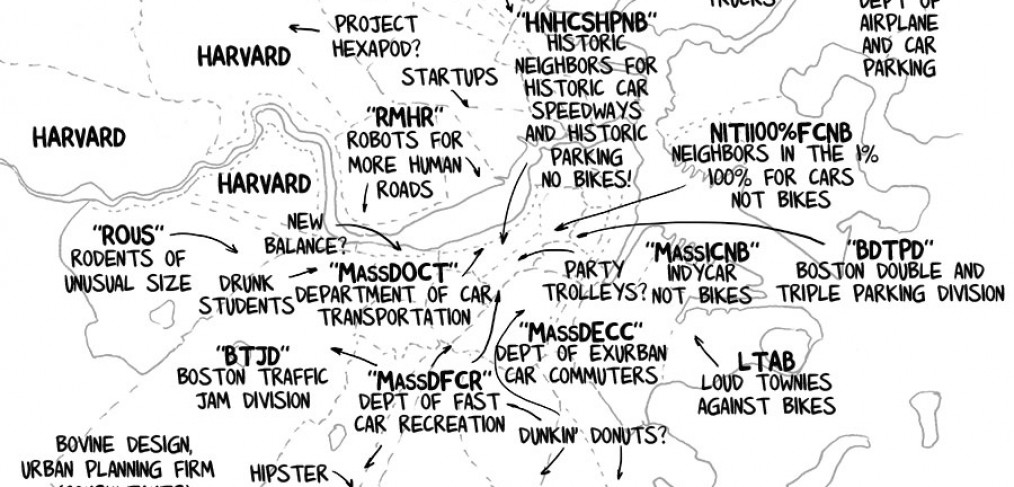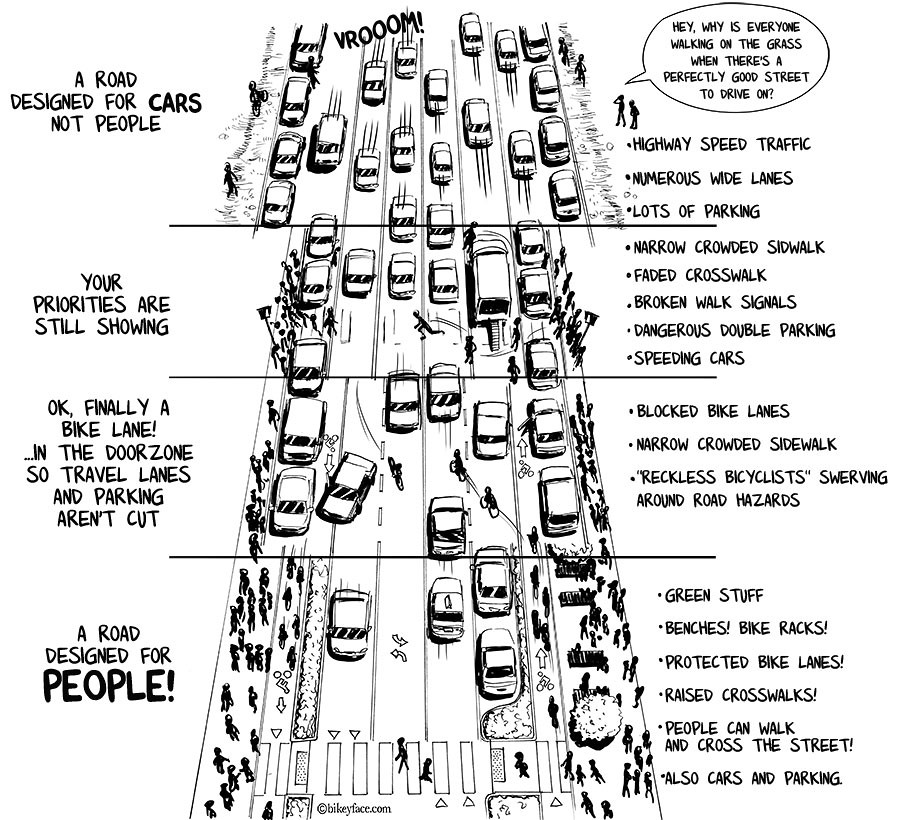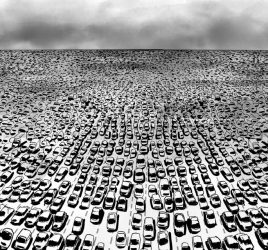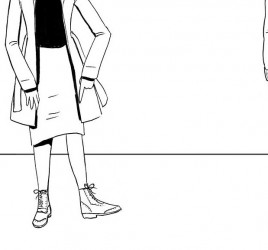
Different Roads
Sometimes when I hear about great bike infrastructure in other cities I’m tempted to move hundreds or thousands of miles away. Truthfully, in Boston, sometimes it doesn’t mean moving hundreds of miles. Sometimes it’s matter of going 2 blocks.
That’s because metro Boston is really a bunch of towns/cities very close together. Each one has different levels of bike-ability. Because of this, when biking in the metro Boston area you can experience many different approaches to bike infrastructure… sometimes one after another on the same road.
Making this even more confusing, even within a city the bike-ability varies. There are different neighborhoods with different personalities, some neighborhoods that get a lot of attention, and some neighborhoods that seem totally forgotten. And not all roads within a city are owned by a city. There are different agencies which also have different approaches to infrastructure on their roads. As a bicycling citizen it’s really hard to figure why there is so much variation. Who who owns what? Who do I email if I have a safety or bike concern? Who is responsible for making improvements? It’s really hard to figure out, there’s a lot of guess work.
And I wonder if it’s this complicated in every city.






If the road is truly designed for people, then it needs to take cyclists of all abilities into account. The ones who wish and are able to ride 15-20 mph should not be shoved into a glorified sidewalk off to the side where they become hidden by parked cars and other obstacles. Every separated side path and cycletrack should also have sharrows and BMUFL in the right-hand travel lane. To not do so means that the priority of the street design is still motor traffic, and getting cyclists out of the way for the convenience of motorists.
The cost of a few signs and paint is minuscule compared to the cost of the cycletrack itself, so why would you NOT install both at the same time?
You’re right – the road should take all cyclists into account: including those cyclists who want to ride at 20mph but not share with cars. (Fit and in a rush does not necessarily imply brave.) So the general answer is that if your cycle tracks are not wide enough, smooth enough and straight enough to do 20mph whilst overtaking other cyclists doing 10mph, then your cycle tracks are not good enough! The Dutch manage to have them, so it’s possible. Let’s keep demanding better!
Nice work. Love the uniqueness of each city thus requires cycle infra to gain from it vs. impose on it 🙂
I can’t speak for every city, but it is similarly complicated in LA. You’ve got anti-cycling and pro-cycling neighborhoods, a film industry that is against green bike lanes (they say it makes it hard for the city to double for New York…WHICH HAS GREEN BIKE LANES), and also some parts that seem like “neighborhoods” but are completely separate cities with different priorities and different organizations handling road infrastructure (Beverly Hills, Culver City, Burbank just to name 3). Our mayor is a proponent of people-centric roads but not everyone has gotten on the bus so far.
I spent a month in Sydney. There was a separated bike lane outside my door. I was so envious of them.
Old cities in the US are a disaster when it comes to roads and bikes. You should move to a new city where the roads have been designed and built for modern transportation needs and bikes. Tucson, Arizona is such a city, and it’s 75 degrees there in February. They don’t sell snow shovels in Tucson. After last winter, I’m surprised you’re still in Boston.
Never been to Tucson, but those new sunbelt cities I’ve visited all seem to be very car centric.
Boston is a great city with a lot of wonderful things to do and much opportunity. Far better to push for positive change to make a good place better than to run away.
But you live in a desert. I like trees and the change of seasons. Water too. We get more then 12 ” of rain in some months, not for the whole year. Call me when your “dry” heat hits 112 F in the shade. But yes, older cities do have some more transportation challenges. Boston is great, walkable and biking city, lots of great improvements in the last 3 years.
Yes, it is this complicated elsewhere too – a part of the automobile-centric culture in which we attempt to exist. Here in Rochester, NY we have a beautiful trail along the Genesee River linking the center of the city with University of Rochester, several local business and retail locations, and Rochester institute of Technology. It is pleasant to ride albeit partly unpaved – except in winter, when there is no maintenance and it is impassable. My efforts and those of other cycling advocates for winter maintenance of this thoroughfare are thwarted because it is in the jurisdiction of no less than six agencies, none of which are willing to cooperate on winter maintenance. You can bet that the horribly congested and bicycle-unfriendly parallel automobile road is always cleared, though, despite its passage through the same jurisdictions. (Well, cleared for automobiles that is. The sidewalks and shoulders, where they exist, are clogged with filthy salt slush and rusted automobile debris all winter.)